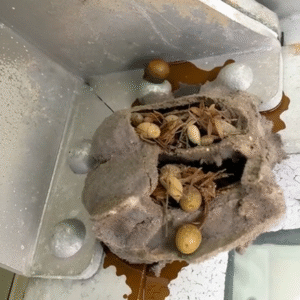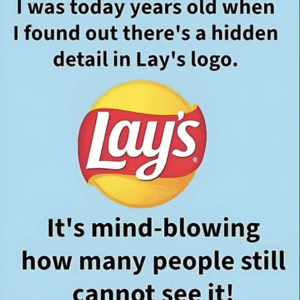Micheál Richardson, born Micheál Neeson, was only 13 years old when his life changed forever. His mother, acclaimed actress Natasha Richardson, tragically died in a skiing accident in 2009. That loss not only devastated her family and the entertainment world but left an indelible mark on her eldest son, who would later choose to carry her name in tribute to her legacy.
The love story between Natasha Richardson and Liam Neeson began on Broadway in 1993, during a production of “Anna Christie.” The chemistry between the two was undeniable, igniting a relationship that transcended the stage. At the time, Richardson was married, but the spark between her and Neeson was undeniable. Eventually, her marriage ended, and the pair tied the knot in 1994. Their connection deepened with time, and they soon became one of Hollywood’s most beloved couples.
The bond between Natasha and Liam was rooted in mutual respect, shared passions, and an openness that made their relationship enduring. Richardson once said in an interview with Country Living, “I’m glad women fall in love with him—because I know why.” It was a testament to the deep affection and understanding they shared. Together, they built a family, welcoming their first son, Micheál, in 1995, and their second, Daniel, just 18 months later.
Their life together seemed charmed—until that tragic day in 2009. Natasha suffered a seemingly minor head injury while skiing in Quebec. Initially dismissing the fall as nothing serious, her condition rapidly deteriorated. By the time she reached the hospital, the damage was irreversible. Doctors declared her brain dead.
Liam Neeson later revealed the gut-wrenching decision he had to make. The couple had made a pact: if either were ever in a vegetative state, the other would pull the plug. Honoring that promise, he made the excruciating choice to turn off her life support after family and friends had a chance to say goodbye. It was a decision that shattered the family but one made out of love and respect.
For Micheál, the loss was especially profound. Thrust into grief at such a young age, he had to navigate adolescence under the shadow of tragedy. But instead of letting it define him, he eventually found strength in honoring his mother’s memory.
Years later, Micheál chose to change his last name from Neeson to Richardson. It was a powerful, deeply personal decision—a symbolic gesture to carry his mother’s legacy forward. “It was mostly a tribute to my mother and a way to carry her with me,” he explained in an interview with The Times. Liam Neeson expressed immense pride in his son’s choice, calling it “a lovely gesture” that meant the world to Natasha’s mother, Vanessa Redgrave, and her sisters. “I’m happy with it,” he added, visibly moved by Micheál’s reverence for his late wife.
Micheál has since forged his own path in the entertainment industry, stepping out from the considerable shadow of his famous parents. His film credits include appearances in productions such as “Anchorman 2: The Legend Continues,” “Vox Lux,” “Big Dogs,” “Broken Symphony,” and “Paradise.” Though still early in his career, Micheál has shown range, sensitivity, and a clear passion for the craft.
His performances have grown increasingly nuanced, and his presence on screen reflects a blend of talent and depth that many believe is rooted in his life experience. Perhaps most notably, Micheál starred alongside his father in the 2019 film “Cold Pursuit” and again in “Made in Italy,” a poignant drama about grief and healing that paralleled their real-life journey. The movie, which centered on a father and son coping with the loss of their wife and mother, offered both actors a cathartic experience. Their on-screen dynamic resonated with audiences and critics alike, who praised the authenticity of their performances.
For Micheál, acting is not just a profession—it’s a way to remain connected to his mother. Natasha Richardson came from a prestigious acting lineage herself, as the daughter of legendary actress Vanessa Redgrave and director Tony Richardson. It’s clear that Micheál has inherited not just her name but also her artistic spirit. Each role he takes on feels like a continuation of a legacy built on talent, integrity, and emotional honesty.
In interviews, Micheál has been candid about the weight of his family name and the responsibility that comes with it. Yet, he embraces that pressure, seeing it as a chance to honor his roots while carving his own identity. He doesn’t shy away from the past—instead, he draws strength from it.
Liam Neeson, for his part, has remained a steady, supportive figure in his sons’ lives. Though deeply affected by Natasha’s death, he has continued to work, raising Micheál and Daniel as a single parent. His support of Micheál’s name change and his collaborations with him on screen speak volumes about their bond. It’s a relationship marked by mutual respect and shared grief, but also by resilience and love.
Natasha Richardson’s untimely death left a void in the world of cinema, but her spirit endures—through the family she built, the performances she gave, and the son who now proudly carries her name. Micheál Richardson is not only continuing her legacy but expanding it in his own way, with grace, talent, and purpose.
His story is a moving reminder that from loss can come strength, and that honoring those we’ve lost can shape a meaningful, impactful future. The Richardson-Neeson legacy is one built on love, passion for the arts, and a commitment to staying true to oneself, no matter the weight of public expectation.
As Micheál continues to build his career, it’s clear that Natasha Richardson would be incredibly proud—not just of his accomplishments on screen, but of the man he’s become. Her legacy lives on through every choice he makes, every character he portrays, and every step he takes in the industry they both loved.
This story of love, loss, legacy, and healing serves as a powerful reminder that behind every public figure is a personal journey—often marked by tragedy, but also by courage and quiet triumph. Micheál Richardson stands as a testament to the enduring power of family, memory, and the human spirit.




